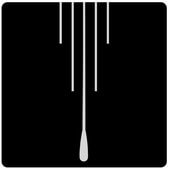The Buzz About the Trumpet Embouchure
Summary
- Close your lips as if saying "mmm"
- Roll your lips together and keep them pressed against your teeth
- Firm the corners of your mouth without tensing the center of your lips
- Completely center the mouthpiece on your lips
The term embouchure refers to the muscles around your mouth and the shape your mouth and jaw must take to produce a good sound on your instrument. Forming a good embouchure takes time and practice, and you’ll find your mouth getting tired while playing until you’ve strengthened your embouchure muscles more. Below are the first steps to forming a good embouchure.
- Moisten your lips.
- Close your lips, as if saying “mmm” and align your upper and bottom teeth. You will want the fleshy part of your lips rolled together (but not rolled over your teeth).
- Flatten and point your chin downwards.
- Firm the corners of your mouth, almost as if you are about to smile. Keep the center of your lips closed and relaxed. You can also imagine trying to spit a small seed, but without puckering your lips much – your mouth should take a similar shape.
- Completely center the mouthpiece on your lips.
This is simply a starting point. Over time you will find an embouchure that works right for you.
All notes on brass instruments are produced by "buzzing" the lips together. Think of this like blowing a raspberry, but with the corners of your mouth pulled tight.
- Form a trumpet embouchure, per the instructions above.
- Direct a narrow stream of air through the center of your lips; imagine blowing through a coffee straw or spitting a seed.
- Push your lips together until they start to vibrate. If you have the mouthpiece against your lips, you will get a tone. If you are just doing it in the air (called "free buzzing), you will hear your lips buzzing.
- If they aren't vibrating and producing a buzz, you are squeezing too hard, or not sealing your lips enough (you will just hear the sound of air for the latter).
If you’re struggling to produce a good tone, try making subtle adjustments to the following things:
- Adjust the firmness of the corners of your mouth. You can say “ee” to get an idea of what engaging those muscles feels like. Your mouth, however, shouldn’t be spread too wide. It should likely mostly natural.
- Keep your lips closed more or less tightly. If they’re not sealed enough, you’ll just be blowing air. If they’re too tight, no air will escape. Ultimately, you want to use as little pressure as possible, so find the point where your lips require the least amount of force in order to produce a buzz.
- Adjust the exact placement of the mouthpiece. Some people need it placed higher or lower, or a little to the left or right rather than dead center.
Keep in mind that your embouchure is not the only thing that produces a good tone. A balance between your embouchure, airflow, posture, and tongue will help get you the perfect tone. And don’t forget to stay relaxed!
Conclusion
